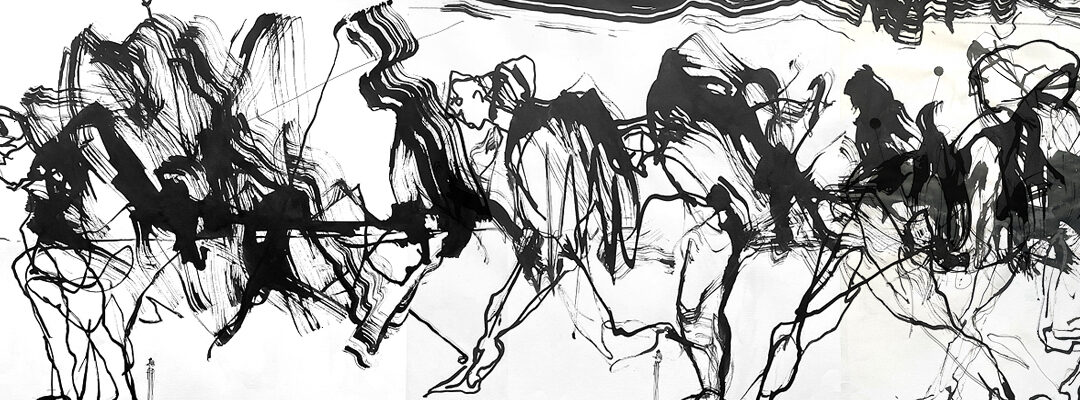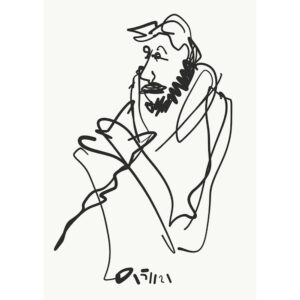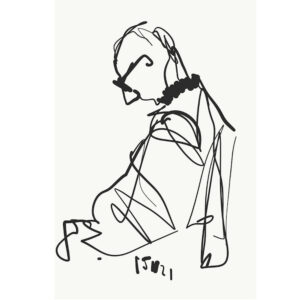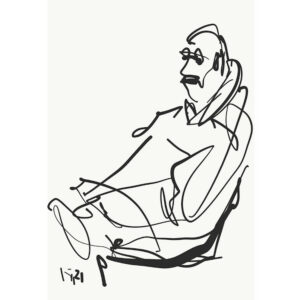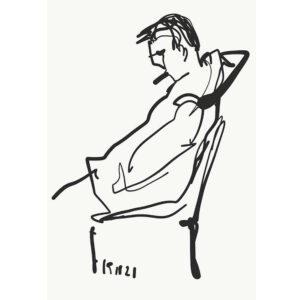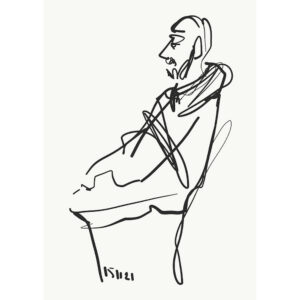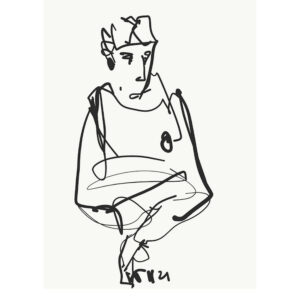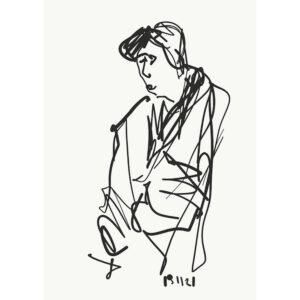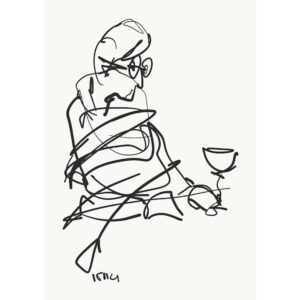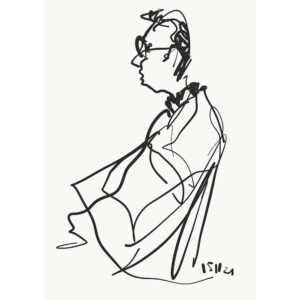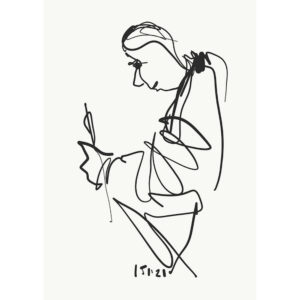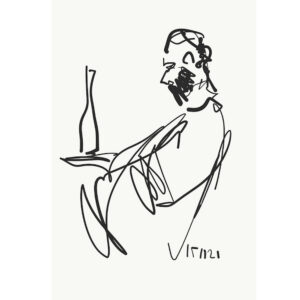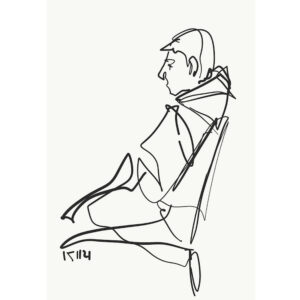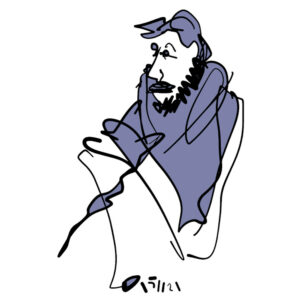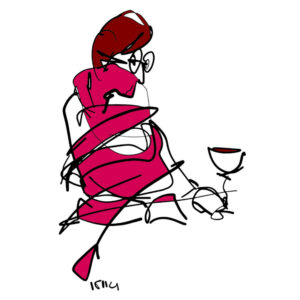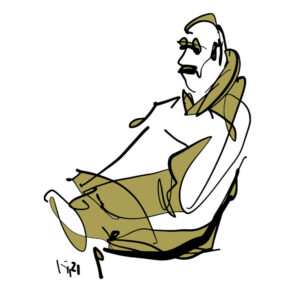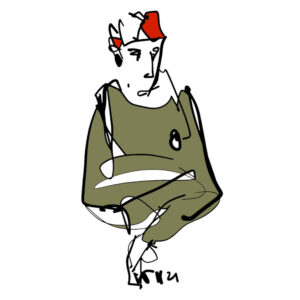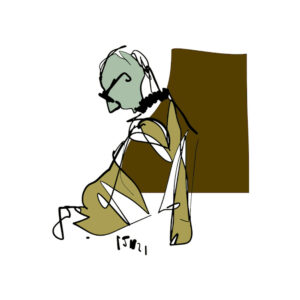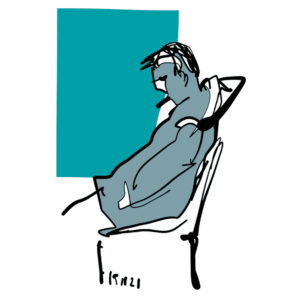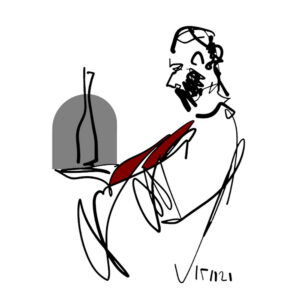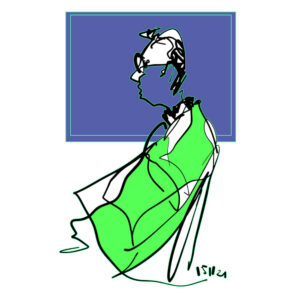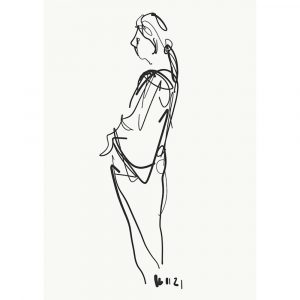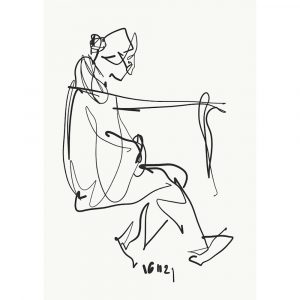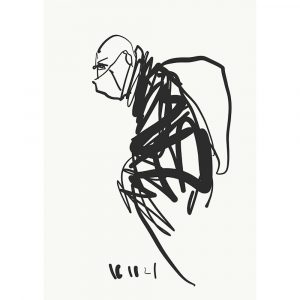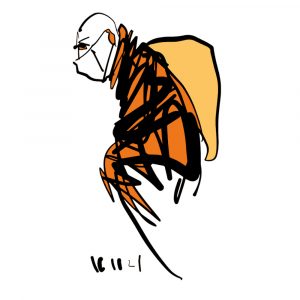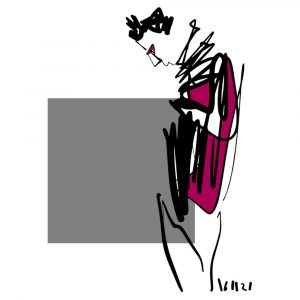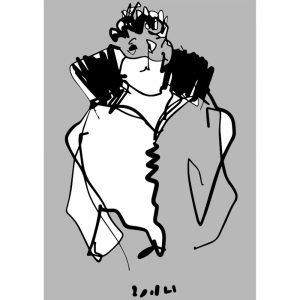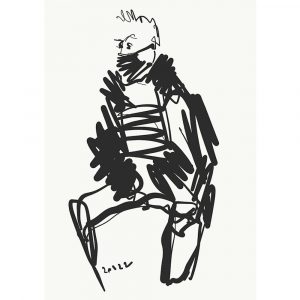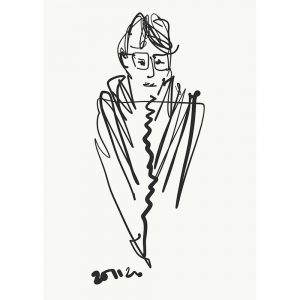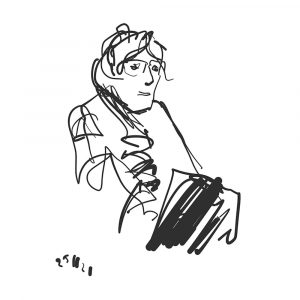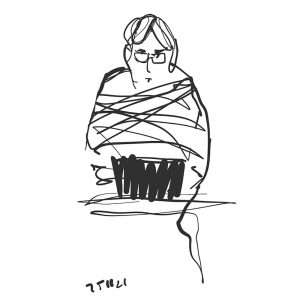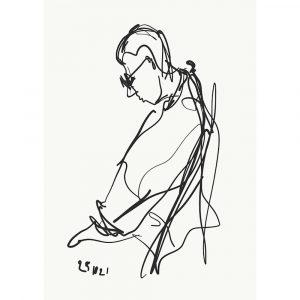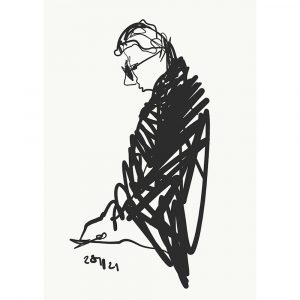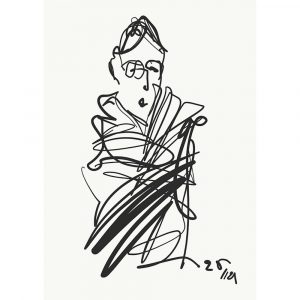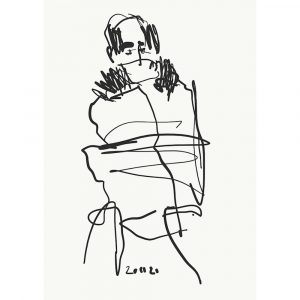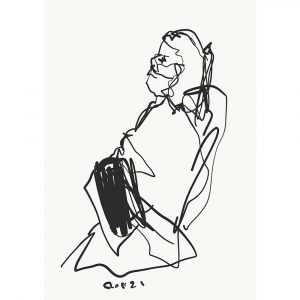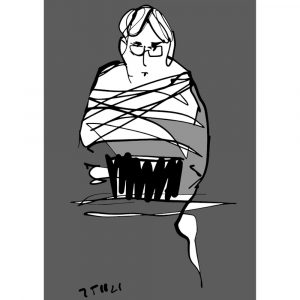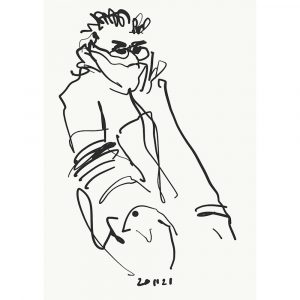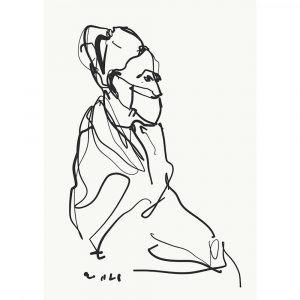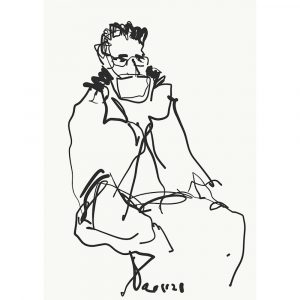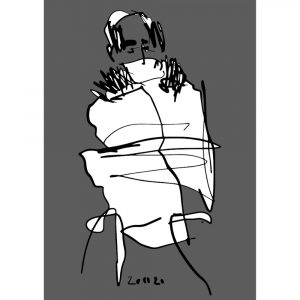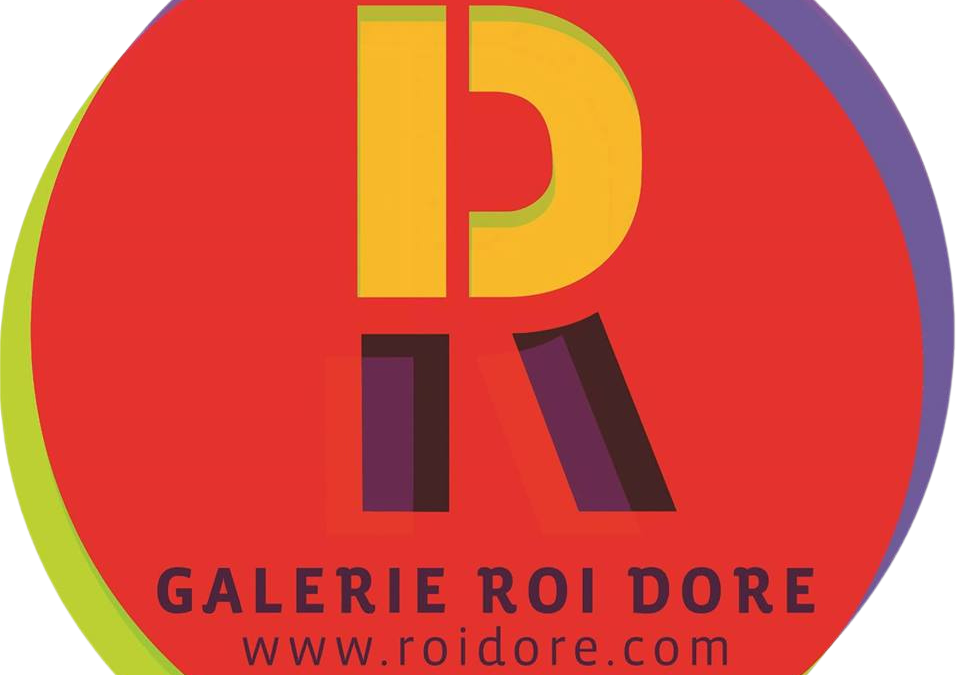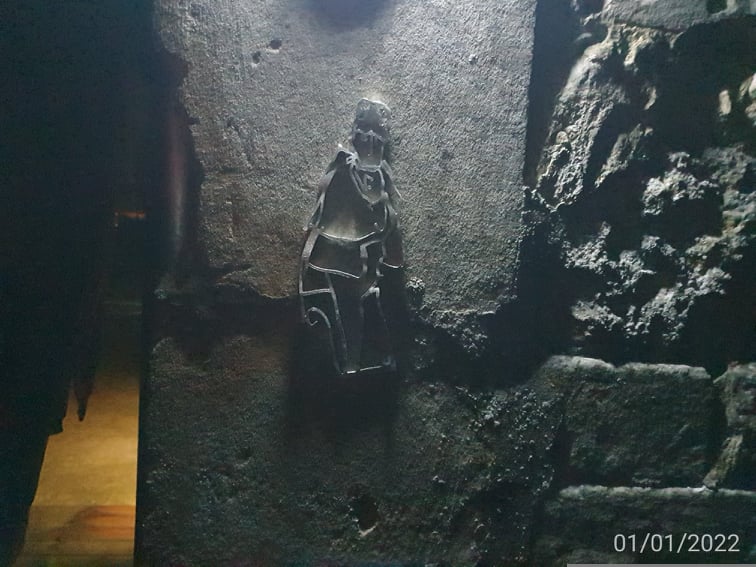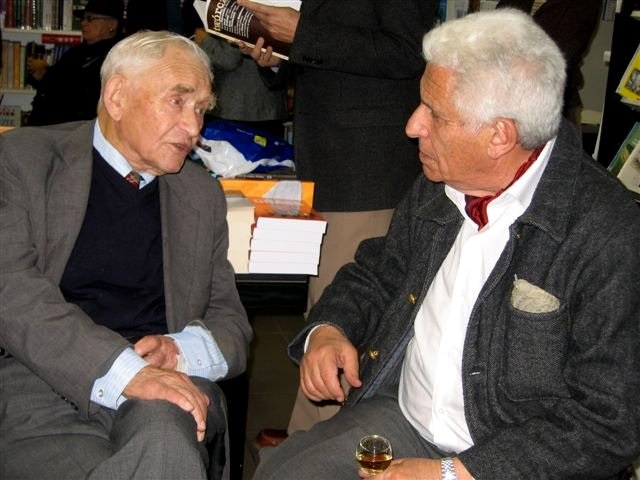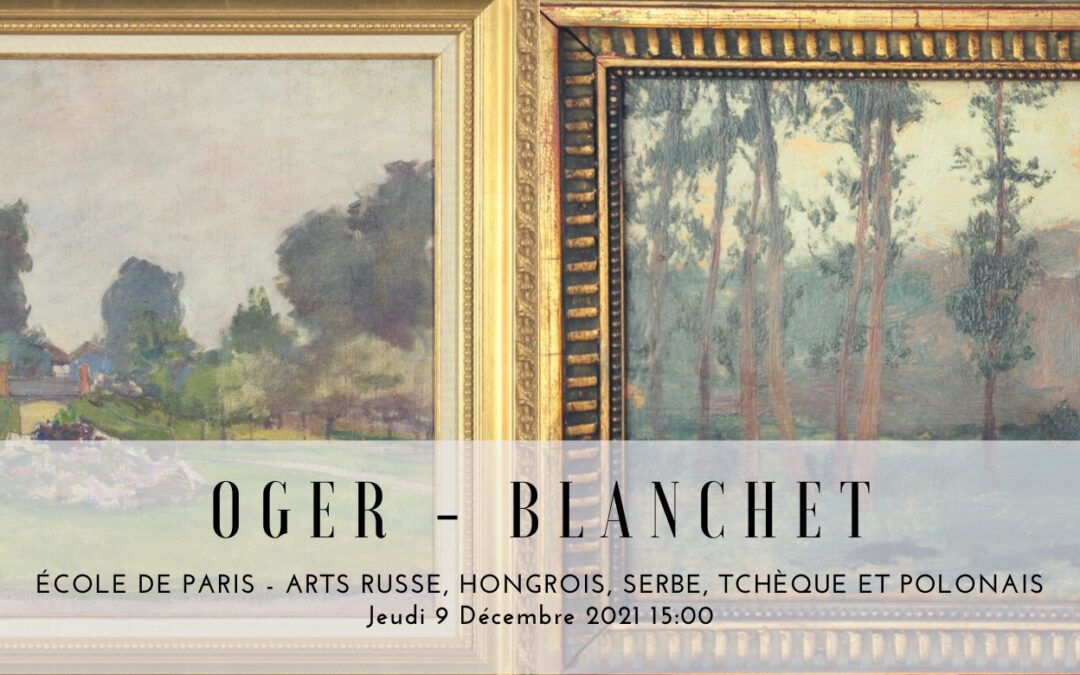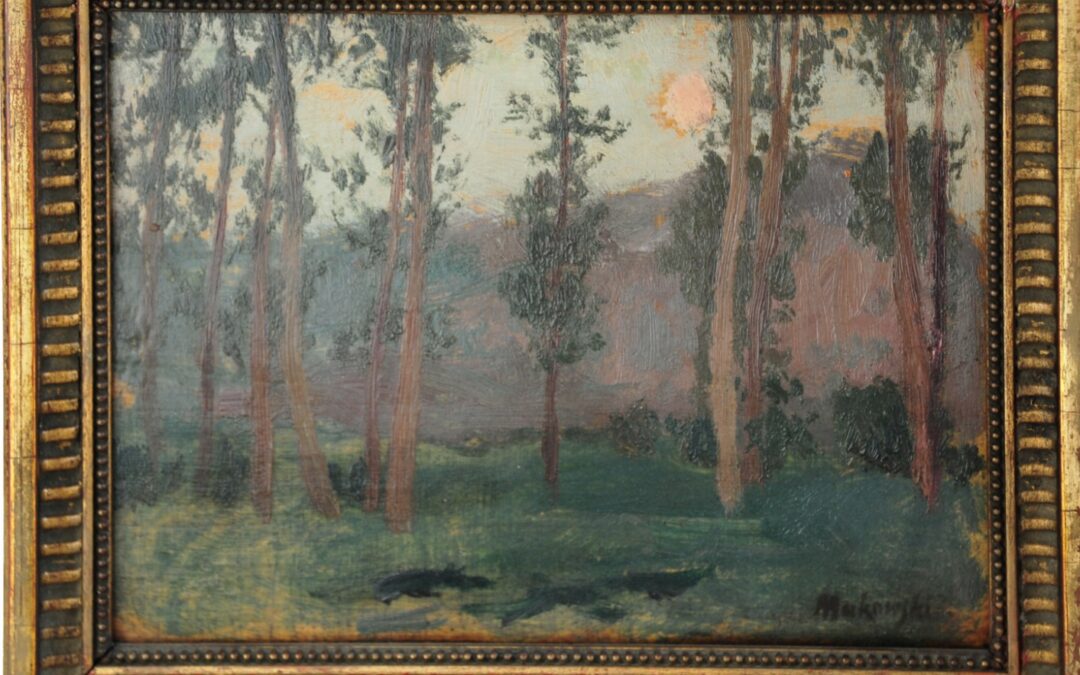Tadeusz / Tadé MAKOWSKI, Landscape with Trees, c. 1908
Made in oil on a wooden panel, this painting witness of the beginnings of Tadeusz Makowski’s artistic career – on the one hand his relationship with Wanda Poplawska, one of the most important figures in his life at that time and on the other hand of his first steps as an artist. This painting is all the more interesting since the artist painted landscapes all his life, so the stylistic changes perceived through these works allow us to follow the evolution of his artistic approach and thought. Even in this early work, we already find a certain skill in the use of color and in the freedom of artistic gesture: despite the small format and the very conventional subject, the brushstrokes are vigorous, powerful even. The painting is signed in the lower right corner. It is not dated, but the style and especially the dedication on the back allow us to place it around the year 1910 (probably closer to 1908). The dedication is inscribed on a piece of paper glued on the back of the painting. The paper is somewhat damaged, but we can decipher – at least partially – the inscription which reads: “Szanownej Pani Popławskiej (…?) Makowski” (to the esteemed Mrs. Poplawska (…?) Makowski).
The work is therefore dedicated to Wanda Poplawska (primo voto Glinkowa), whom Makowski met during his studies at the Academy of Fine Arts in Krakow. A painter herself (she took painting lessons at the Academy, but also with Wladyslaw Slewinski – in 1910 she went to his home in Doëlan in Brittany), she was a faithful friend of Makowski. He often visited her at her property in the Ukraine and above all, it was thanks to her and her husband Cezary that the artist was able to make two trips to Italy in 1907 and 1908. As he himself wrote: ” I can’t talk about my friend Wanda Poplawska, whom I met during my studies at the Academy of Fine Arts, in any other way than with great gratitude. She helped me get my health back by paying a doctor when I was battling severe pneumonia. Thanks to the generosity of Wanda and her husband, I was able to accompany them on two trips to Italy, which was a great experience for me. For the first time the world of high art opened up to me, and I remained under its influence for a long time. Then I came to the conclusion that in order to evolve as an artist, I had to go somewhere that would provide me with new inspiration. »(1)
Wanda Poplawska therefore played a decisive role in the career of the artist, since it was thanks to her that he was able to admire for the first time the great works of art of the past and this confrontation reinforced him in the choice of his path: the departure for the West (the decision he put into execution very quickly, since already in 1909 Makowski left Poland to settle in Paris).
As for the unidentified word of the dedication, it seems to indicate the location, probably the place where Makowski was at the time of the realization of the work and/or the subject of the work. It may be a place in Ukraine, near Wozel (also known as Worzel or Worcel) – the property of Cezary and Wanda Poplawska where Makowski spent the whole summer of 1908 and where he was able to meet, among others, the poet Boleslaw Lesmian (whereas Wanda was very close to painters, her husband, literary critic and poet, surrounded himself with poets and he was at one time Lesmian’s mentor). Their house in Wozel was therefore a real artistic center where artists and intellectuals – emerging and established – of the time met. We also know, thanks to the memories of Cezary Poplawski, that Makowski liked to go at sunrise with his easel and his brushes in the forests surrounding Wozel’s property: “in the morning (…) he would go into the forest and put himself in the middle of the immense pines” (2). The painting therefore seems to represent precisely one of those moments that Makowski was able to spend at sunrise in the Poplawski’s forest, immortalized forever in a painting dedicated to Wanda.
The work thus testifies – as much by the subject it seems as by the dedication – to the gratitude of the artist towards the one who was his friend and his benefactress. It can also be compared to another painting, created in the very much of the same context: The portrait of the lady in a pink dress which can be admired today in the National Museum of Warsaw and which represents… Wanda Poplawska, painted by Makowski around the time he made his two trips to Italy.
The portrait, dated 1908 (approx.), was therefore, most probably, made around the same time as the small landscape in question – both therefore date from the time when the relations between Makowski and Poplawska were very friendly and bear witness to the artist’s gratitude to Wanda, who allowed him to discover the vast world and to glimpse the possibilities it offered.
Makowski left Poland in 1909 – so in all probability shortly after painting the landscape in question – and he passed first through Munich and then settled in Paris. There he discovered the art of the great masters of the past during his visits in the Louvre, befriended Apollinaire – always ready to take young artists under his wing and particularly well disposed towards newcomers from the East. He also admired the paintings of Cézanne and witnesses the birth of cubism. He became close to Slewinski, with whom he took refuge in 1914 after the start of the First World War. If the styles of two artists were very different – Slewinski, much older, was close to the School of Pont-Aven, Gauguin, the Nabis; Makowski seemed at the time more influenced by Cézanne and Cubism – Slewinski’s home offered him on the one hand a haven of peace after the gloomy and disturbing Paris of the war and on the other hand, no doubt, a much needed intellectual and artistic stimulation. But after two years their differences became too much to bear and and Makowski left. He stayed on the Brittany coast for some time, but returned to Paris again in 1915. Makowski’s style – and career – would subsequently experience many ups and downs. If he draws his inspiration left and right, going from the beginnings of Cubism to the Flemish masters, he quickly develops his own style, very characteristic and easily identifiable. But the starting point of his travels and his artistic research was in a way his friendship with Wanda Poplawska, who took him on his first trips abroad and introduced him to great art. In this sense, the small landscape is a work of great historical importance: it bears witness not only to Makowski’s artistic development, but also – perhaps even above all – to his career.
(1) Maria Milanowska, Tadeusz Makowski o sobie samym (article published online on the niezlasztuka.pl platform).
(2) Jaroslaw Marek Rymkiewicz, Lesmian. Encyclopedia, Sic! Publishing House, Warsaw, 2001, p. 401-402.
Text: Magda Sawczuk Ph.D.
